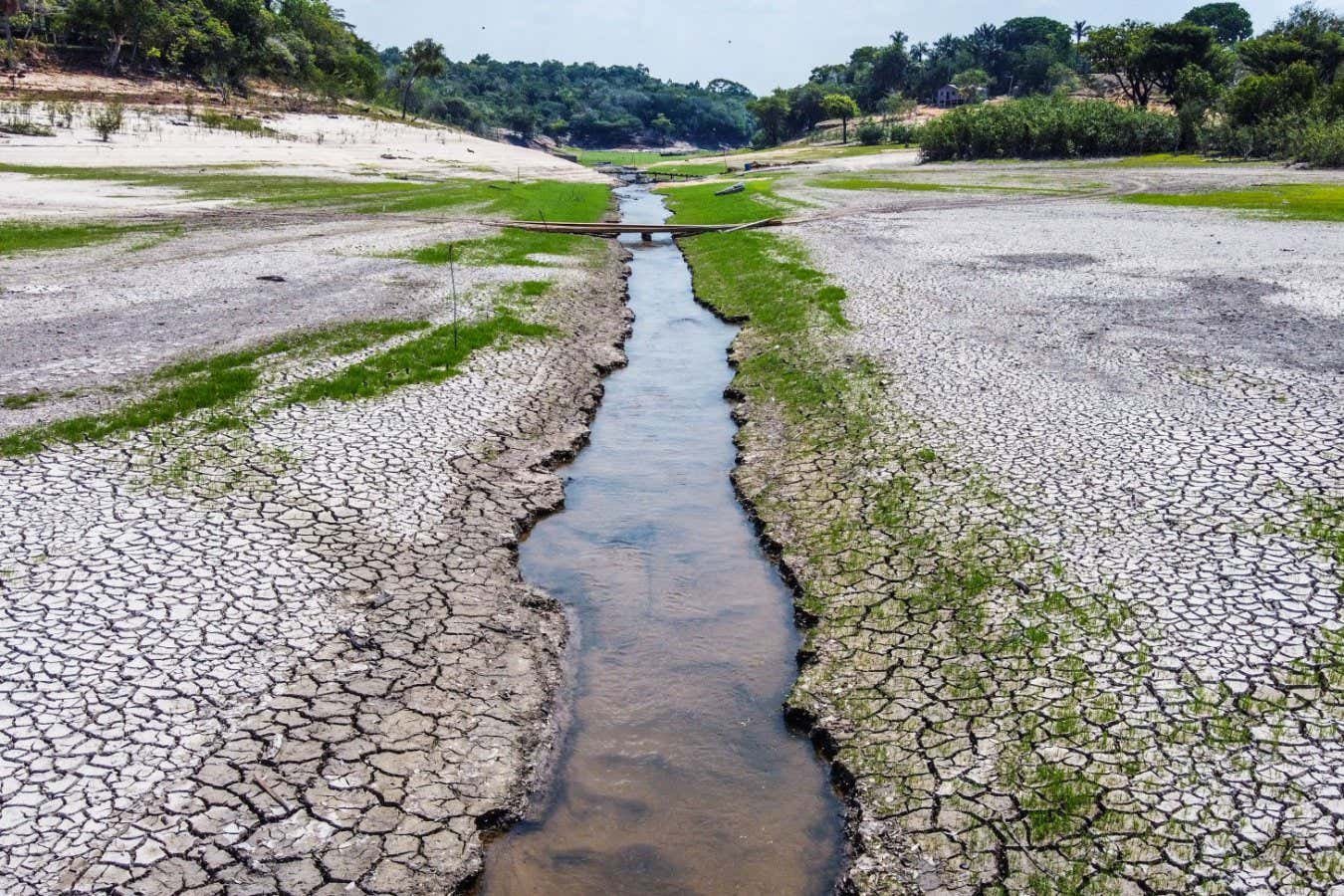
A severe drought this year affected the Rio Negro, a tributary of the Amazon, in Brazil
Andre Coelho/EPA-EFE/Shutterstock
The increasing frequency and severity of droughts across the world is “an unprecedented emergency on a planetary scale”, says a United Nations report launched today at the COP28 climate summit in Dubai in the United Arab Emirates.
The International Drought Resilience Alliance, a coalition of 34 countries that was established last year at COP27, is calling for more investment in drought preparation, from early warning systems to rainwater collection ponds.
Three out of four people on Earth could be affected by drought by 2050 as warmer air sucks up more moisture, causing more frequent and intense dry spells. This year, 14 per cent of the contiguous US has been suffering severe to extreme drought, and the heart of the Amazon rainforest has seen the least rain in 40 years, sending rivers to record lows. But the gradual, “silent devastation” droughts cause is often neglected by media and governments, says the UN report, called the Global Drought Snapshot.
“Drought is a natural hazard, but it’s not a natural disaster, and we can do everything possible to really not turn it into a natural disaster,” says Daniel Tsegai at the UN Convention to Combat Desertification, which produced the report. “If we are prepared for drought, we are not only saving lives and land use, but it also makes economic sense.”
Droughts cost billions of dollars annually. This year, India’s driest August in a century drove up global sugar and wheat prices and the Panama canal had to cut shipping traffic by a third due to a water shortage.
In the past half-century, droughts have also cost at least 650,000 lives. An estimated 43,000 people died last year in a record drought in Somalia, which is now suffering once-in-a-century flooding.
Tsegai remembers droughts as a boy in Eritrea when his family struggled to eat and his sister stayed home from school because there was no running water for personal hygiene. Investing in drought resilience can be up to 10 times cheaper than paying for damage and humanitarian aid later, he says.
The first challenge is to predict droughts. A UN initiative aims to install extreme weather early warning systems throughout the world by 2027. For the Horn of Africa, which includes Somalia and Eritrea, scientists can now forecast drought up to eight months beforehand by looking at Pacific Ocean temperatures, says Chris Funk of the University of California, Santa Barbara.
“Understanding the way that climate change is making natural climate variations more intense opens the door to anticipating and predicting and managing their impacts,” says Funk.
The next step is collecting and conserving water, says Tsegai. Restoring degraded ecosystems can help retain water, and switching to more drought-resistant crops and efficient irrigation can make farming more resilient. In Ethiopia, a programme to dig rainwater ponds, reduce overgrazing and plant trees increased plant growth by 14 per cent in drought-stricken areas.
Societal changes such as moving towards plant-based nutrition and curbing rapid population growth would also allow more efficient land use, according to the report.
A study earlier this year found that sustainable development, prioritising health and education, would reduce people’s exposure to drought by 70 per cent this century compared with fossil-fuelled development, underscoring the need to transition away from oil, gas and coal.
Topics:

